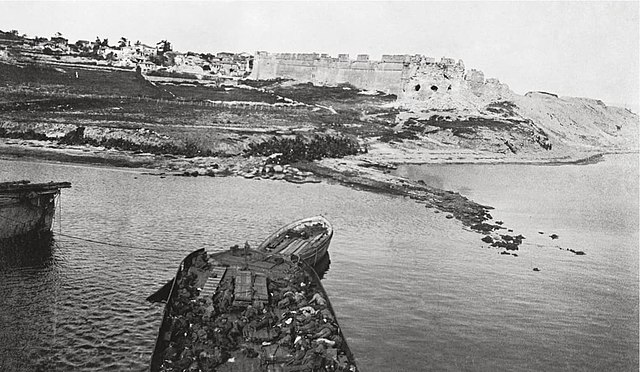The Hampshire Regiment was a line infantry regiment of the British Army, created as part of the Childers Reforms in 1881 by the amalgamation of the 37th Regiment of Foot and the 67th Regiment of Foot. The regiment existed continuously for 111 years and served in the Second Boer War, World War I and World War II. An Army Order of the 28 November 1946 stated, due to distinguished service in the Second World War, the regiment would be re-titled as the Royal Hampshire Regiment.
Regimental crest of the Hampshires
The SS River Clyde holds dead of the Hampshire Regiment who were killed while attempting to get ashore at Sedd el Bahr during the Gallipoli campaign.
Men of the 1st Battalion, Hampshire Regiment, part of the 231st Brigade of the 50th Division, crossing the Seine at Vernon, 28 August 1944.
Men of the 2/4th Battalion, Hampshire Regiment scale an obstacle during 'toughening up' training in wintry conditions at Wateringbury in Kent, 20 January 1942.
37th (North Hampshire) Regiment of Foot
The 37th Regiment of Foot was a line infantry regiment of the British Army, raised in Ireland in February 1702. Under the Childers Reforms it amalgamated with the 67th Regiment of Foot to become the Hampshire Regiment in 1881.
Sir Robert Munro, 6th Baronet, colonel of the regiment who fell at the Battle of Falkirk in January 1746
Soldier of 37th regiment, 1742
Koor Sing, "The Rebel of Arrah", and his attendants – From a photograph, from the Illustrated London News (1857)







